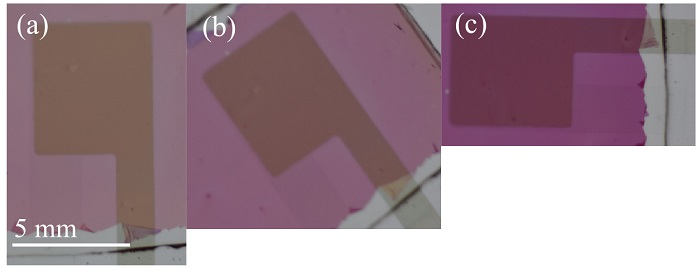June 24, 2016
Michael Kudenov
Matt Shipman
Researchers from North Carolina State University have developed a new tool for detecting and measuring the polarization of light based on a single spatial sampling of the light, rather than the multiple samples required by previous technologies. The new device makes use of the unique properties of organic polymers, rather than traditional silicon, for polarization detection and measurement.
Light consists of an electric field. That electric field oscillates, and the direction in which that field oscillates is the light’s polarization. If the field oscillates randomly, it’s referred to as unpolarized light. The polarization of light can be affected in predictable ways when light bounces off, or is scattered by, physical objects.
“We want to detect and measure polarization, because it can be used for a wide variety of applications,” says Michael Kudenov, an assistant professor of electrical and computer engineering at NC State and lead investigator on this research. “For example, polarization detectors can be used to pick out man-made materials against natural surfaces, which has defense and security applications. They could also be used for atmospheric monitoring, measuring polarization to track the size and distribution of particles in the atmosphere, which is useful for both air quality and atmospheric research applications.”
The new device incorporates three polarization detectors made of organic polymer conductors. Each of the detectors is sensitive to a specific orientation of the polarization. As light enters the device, the first detector measures one orientation of the polarization, and the remainder of the light passes through. This is repeated with the subsequent detectors, effectively allowing each detector to take a partial polarization measurement of the same beam of light. The measurements from all three detectors are fed into a model that calculates the overall polarization of the light.
“Most types of polarized light, particularly in natural environments, have a large linear polarization signature,” Kudenov says. “And three measurements are sufficient for us to calculate the state of linear polarization in a light sample.”
Previous technologies rely on multiple light samples, either taken at different times or at the same time but from different points in space, which can influence the accuracy of results.
The researchers have tested the new device using a laser to provide initial proof-of-concept data. Early tests show that the device can achieve measurement error as low as 1.2 percent.
“It’s a good starting point, though not as good as the best polarization detectors currently on the market,” Kudenov says. “However, we’re optimistic that we’ll be able to reduce the measurement error significantly as we improve the device’s design. We’re really just getting started.”
The paper, “Intrinsic coincident linear polarimetry using stacked organic photovoltaics,” is published online in the journal Optics Express. Lead author of the paper is S. Gupta Roy, a former graduate student at NC State. Co-corresponding author of the paper is Brendan O’Connor, an assistant professor of mechanical and aerospace engineering at NC State. The paper was co-authored by O.M. Awartani and P. Sen of NC State. The work was supported by the National Science Foundation under grant number ECCS-1407885.
-shipman-
“Intrinsic coincident linear polarimetry using stacked organic photovoltaics”
Authors: S. Gupta Roy, O.M. Awartani, P. Sen, B.T. O’Connor, and M.W. Kudenov, North Carolina State University
Published: June 21, Optics Express
DOI: 10.1364/OE.24.014737
Abstract: Polarimetry has widespread applications within atmospheric sensing, telecommunications, biomedical imaging, and target detection. Several existing methods of imaging polarimetry trade off the sensor’s spatial resolution for polarimetric resolution, and often have some form of spatial registration error. To mitigate these issues, we have developed a system using oriented polymer-based organic photovoltaics (OPVs) that can preferentially absorb linearly polarized light. Additionally, the OPV cells can be made semitransparent, enabling multiple detectors to be cascaded along the same optical axis. Since each device performs a partial polarization measurement of the same incident beam, high temporal resolution is maintained with the potential for inherent spatial registration. In this paper, a Mueller matrix model of the stacked OPV design is provided. Based on this model, a calibration technique is developed and presented. This calibration technique and model are validated with experimental data, taken with a cascaded three cell OPV Stokes polarimeter, capable of measuring incident linear polarization states. Our results indicate polarization measurement error of 1.2% RMS and an average absolute radiometric accuracy of 2.2% for the demonstrated polarimeter.















